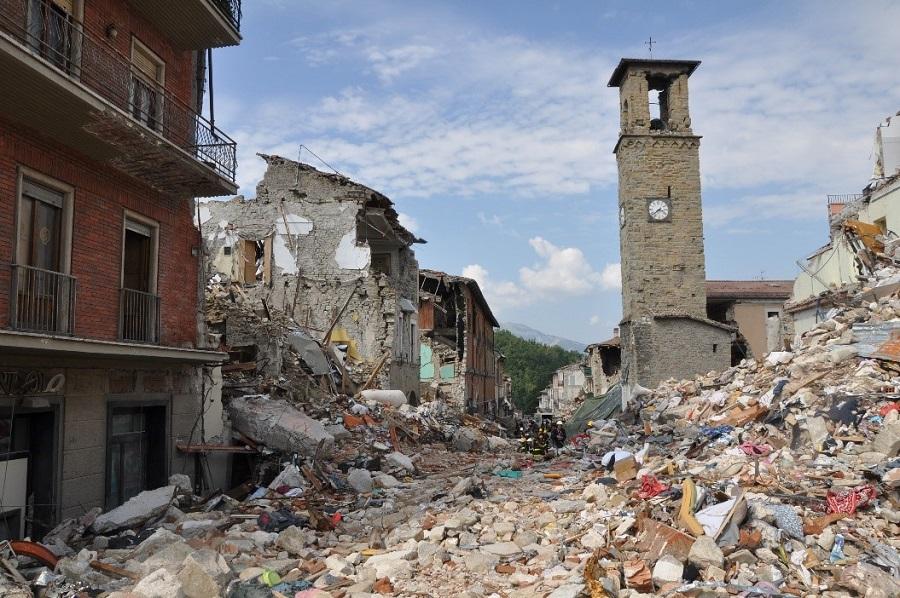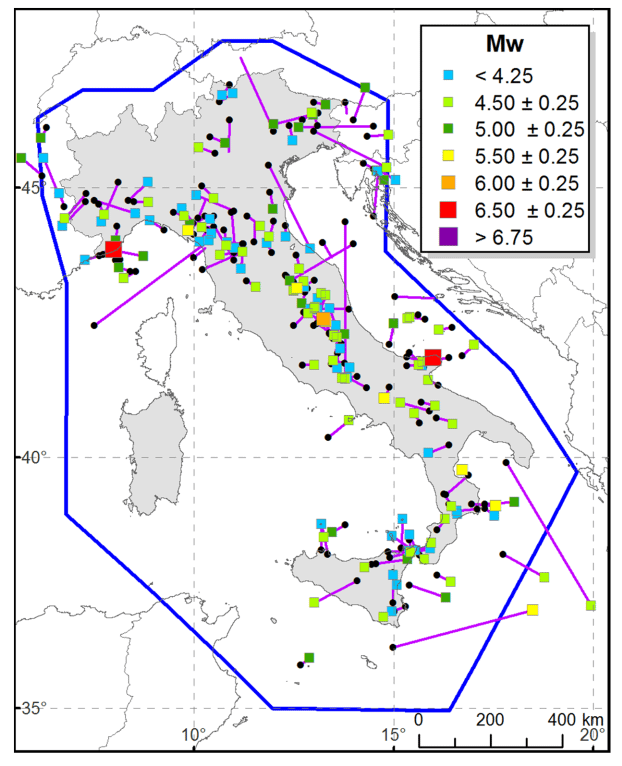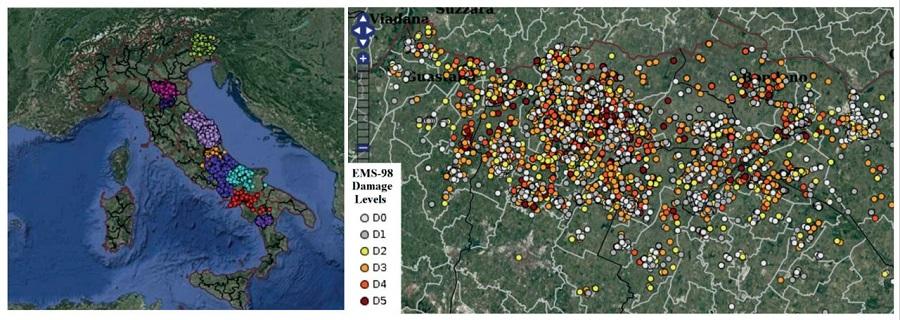Italy has been affected by several damaging earthquakes historically, which makes it a country with moderate-to-high seismicity. Over the past two decades, the 2009 L’Aquila earthquake, 2012 Emilia and 2016 Central Italy sequences (Figure 1) have been a clear reminder of the impact of earthquake risk in Italy, and that better risk quantification is needed to increase the resilience of the local communities and the sustainability of the (re)insurance market.
For these reasons, Willis Re has conducted a comprehensive review aiming to incorporate the latest academic findings and the extensive data collected from recent events in developing a comprehensive view of earthquake risk for Italy.

A robust and long historical earthquake catalogue is the foundation for assessing earthquake hazard. The CPTI15 historical and instrumental catalogue, recently released by the National Institute of Geophysics and Volcanology (INGV) (Rovida et al, 2020), is the ideal benchmark. This catalogue includes an extended time coverage (from 1000 up to 2019) and, more importantly, a significant review of the (a) location and (b) magnitude of historical earthquakes, using state of the art methodologies (Figure 2).
Additionally, a new probabilistic seismic hazard model for Italy released by INGV (Meletti at al 2021), provides significant enhancements in understanding earthquake hazard in Italy compared with the previous version, released in 2004, and allows further benchmarking of the hazard module in catastrophe models.
Willis Re has leveraged both studies, together with its long-standing relationship with the Global Earthquake Model foundation, to develop our view of earthquake hazard in Italy.
Analysis of economic and insured losses recorded in the recent past events in Italy shows that catastrophe models may contain biases in their loss estimation, with either an over- or an underestimation of the economic impact of the event on building portfolios. This raises doubts as to whether the vulnerability modules in existing catastrophe models, which allow the estimation of damage and economic loss as a result of a shaking intensity, reflect the Italian building stock and observed damage.

Source: Adapted from Rovida et al (2020)
To combat this, Willis Re has leveraged the damage observation data from past events over the last 45 years (nine events from 1976 Friuli Earthquake to 2012 Emilia), which the Italian Civil Protection Department has collected and shared via a web platform, named Da.D.O. (Database di Danno Osservato, Dolce et al 2019). Several academic researchers, after extensive revision and harmonisation, have employed the Da.D.O. database (Figure 3) to develop empirical damage functions that provide a realistic estimate of the building damage during past seismic events.
Furthermore, Willis Re reviewed recent research papers on the empirical vulnerability of the most relevant construction typologies for Italy to benchmark the vulnerability component of existing catastrophe models for Italy earthquake.

Source: Adapted from Dolce et al (2019)
“We use latest data and tools from scientific literature and our research partners at the GEM Foundation to develop an advanced view of Italy earthquake risk that adds a new dimension to client’s decision making and risk management.”
Tina Thomson | Head of Catastrophe Analytics EMEA West-South, Willis Re
Data, tools and science have progressed substantially over the last decade in understanding earthquakes and their impact in Italy. The recent findings have been adopted by Willis Re to align catastrophe models to the most up-to-date science and form an enhanced view of earthquake risk for Italy. The losses predicted by different catastrophe models, adjusted to reflect this enhanced understanding of the risks and vulnerabilities, add a new dimension to clients’ decision making around reinsurance strategy, risk management and internal capital modelling.
For further information about the Willis Re view of earthquake risk in Italy, please contact your client advocate.